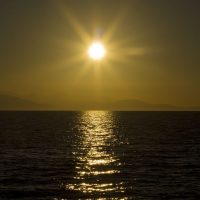Earth’s apehelion will occur at 12:11HST today.

Apehelion occurs when the Earth reaches its furthest distance from the Sun for the year.
It may seem odd to some the apehelion occurs in the middle of summer. One must recall that the distance from the Sun is not the cause of our seasons, that is the effects of axial tilt.
| 2019 Apsides and Seasons | ||||
|---|---|---|---|---|
| Event | Universal Time | Hawaii Standard Time | ||
| Perihelion | Jan 03 | 05:20UT | Jan 02 | 19:20HST |
| Spring Equinox | Mar 20 | 21:58UT | Mar 20 | 11:58HST |
| Summer Solstice | Jun 21 | 15:54UT | Jun 21 | 05:54HST |
| Aphelion | Jul 04 | 22:11UT | Jul 04 | 12:11HST |
| Fall Equinox | Sep 23 | 07:50UT | Sep 22 | 21:50HST |
| Winter Solstice | Dec 22 | 04:19UT | Dec 21 | 18:19HST |
| Data from US Naval Observatory Data Services | ||||
